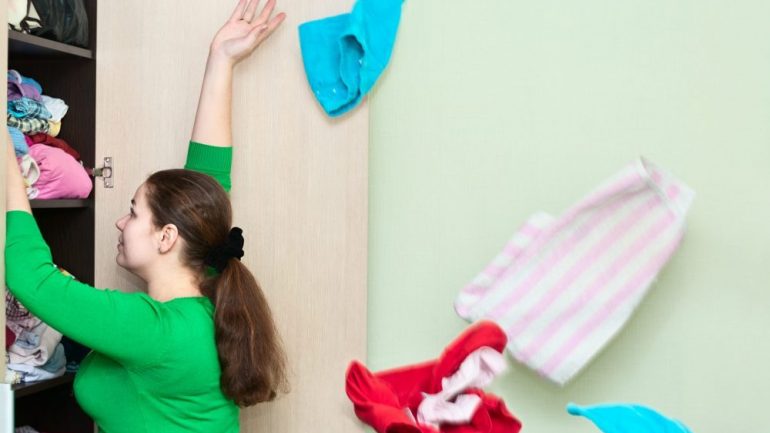Unless you’ve been living under an avalanche of clutter, (pun intended) you’ve probably heard about the KonMari method of organization introduced by Marie Kondo. Her best-selling books and Netflix television series were the talk of home-improvement media over the past year.
Here’s a breakdown of what the KonMari method of decluttering entails and how to answer the question Is the KonMari method for me?
What exactly is the KonMari method?
In her first book, “The Life-Changing Magic of Tidying Up,” Japanese organizing guru Marie Kondo uses the concept of joy as the basis for her method of creating a clutter-free home and life. Kondo recommends working by category, not by room as many organizers do. All items in that category are moved to a central location and sorted. Envision your bed with a mountain of clothing on it, pulled from every nook, cranny and closet in your home. Each item under consideration is held and the owner is instructed to ask: Does this item spark joy? If yes, you keep it. If no, out it goes.
It’s a simple, yet controversy sparking, approach to one’s belongings. As Kondo’s fame has grown, her detractors have created on social media firestorm of mean-spirited memes and harsh Tweets. How could a pair of socks bring you joy, some of the snarkiest of commentators have asked.
Others have rushed to Kondo’s defense, saying much is lost in the translation from Japanese to English. In fact, a well-fitting, high-quality pair of socks can bring the owner much joy in the form of comfort. Tired and sore feet, on the other hand, definitely do NOT instill joy. Do you see now where Kondo is coming from?
How does the KonMari method work?
The method focuses on keeping only what you love and use, requiring that each item have a place in the home which makes for quick tidying once the purge is completed. Kondo doesn’t care how many of something you wind up keeping — as long as you have room for it.
What do I keep?
When looking at an item, the answer to whether or not something brings joy shouldn’t be agonized over, Kondo says. The method does not require you to justify an item’s presence or how it might, eventually, prove advantageous. She looks for the owner’s immediate, intuitive answer based on gut emotions. Better to have a select amount of things that bring you pleasure than a plethora that evokes a mediocre response, Konda recommends.
What do I throw away?
By first deciding what to keep, the ‘what to discard’ question answers itself. If the item does not bring you joy – or you hesitate in answering – then she recommends donating it or tossing it. This differs from other decluttering methods that advocate purging items that have not been used in a certain amount of time, typically a year.
What about my collections?
For those who have extensive collections of books, photos, or keepsakes, the thought of paring down might provoke anxiety. Kondo’s approach to collections is just like everything else contained in the household — keep what brings you joy and what you have room to display. Kondo has been famously misquoted about the number of books she thinks is optimal in a home. While she personally keeps about 30 books in her own home, she doesn’t have any hard and fast limits on what others keep and discard.
Benefits of KonMari.
Kondo believes the end result will transform your life, allowing more time to live in the moment rather than organizing and reorganizing your stuff. This syncs nicely with what research professionals’ findings that less clutter reduces amounts of the stress hormone cortisol, leading to lowered anxiety and guilt.
A more organized home will also likely help with impulse-shopping tendencies as well as the need to “rebuy” items that can’t be found in a disorganized home.
Interested? A growing number of organization coaches have adopted Kondo’s method, for those who want to embrace it. Not convinced? That’s OK, too. There’s no shortage of advice available on the art of organizing. Or perhaps, try Kondo’s method on just one category of belongings in your life that seems out of control. In other words, customize the KonMari method to your circumstances. Use it on kids’ clothes and paraphernalia, but not on your books or shoes, if you wish.
Related – When It’s Time to Hire a Professional Organizer


